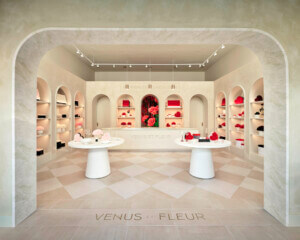Architect and Rice University alumnus Charles Renfro, partner at Diller Scofidio + Renfro (DS+R), is returning to the Houston campus of his undergrad alma mater for the creation of a cross-disciplinary “extroverted mini-campus” dedicated to the visual arts. Described by the firm as a “machine for the production of art,” the 50,000-square-foot multi-department building is named Susan and Fayez Sarofim Hall and will be located directly adjacent to the Michael Maltzan Architecture-designed Moody Center for the Arts and not too far from the Shepherd School for Music’s Alice Pratt Brown Hall, and the newly completed Brockman Hall for Opera. The new hall will incorporate exhibition areas, studios, shops, labs, faculty offices, and more under a sprawling single roof.
A markedly transparent and barn-like structure composed of pre-engineered steel portals spanning 160-feet, DS+R’s design for Sarofim Hall embraces prefabricated construction techniques and promotes seamless interaction across artistic disciplines while paying homage to Rice’s iconic, now-demolished Institute for the Arts—better known as the “Art Barn”—and its sibling structure, the Rice Media Center.
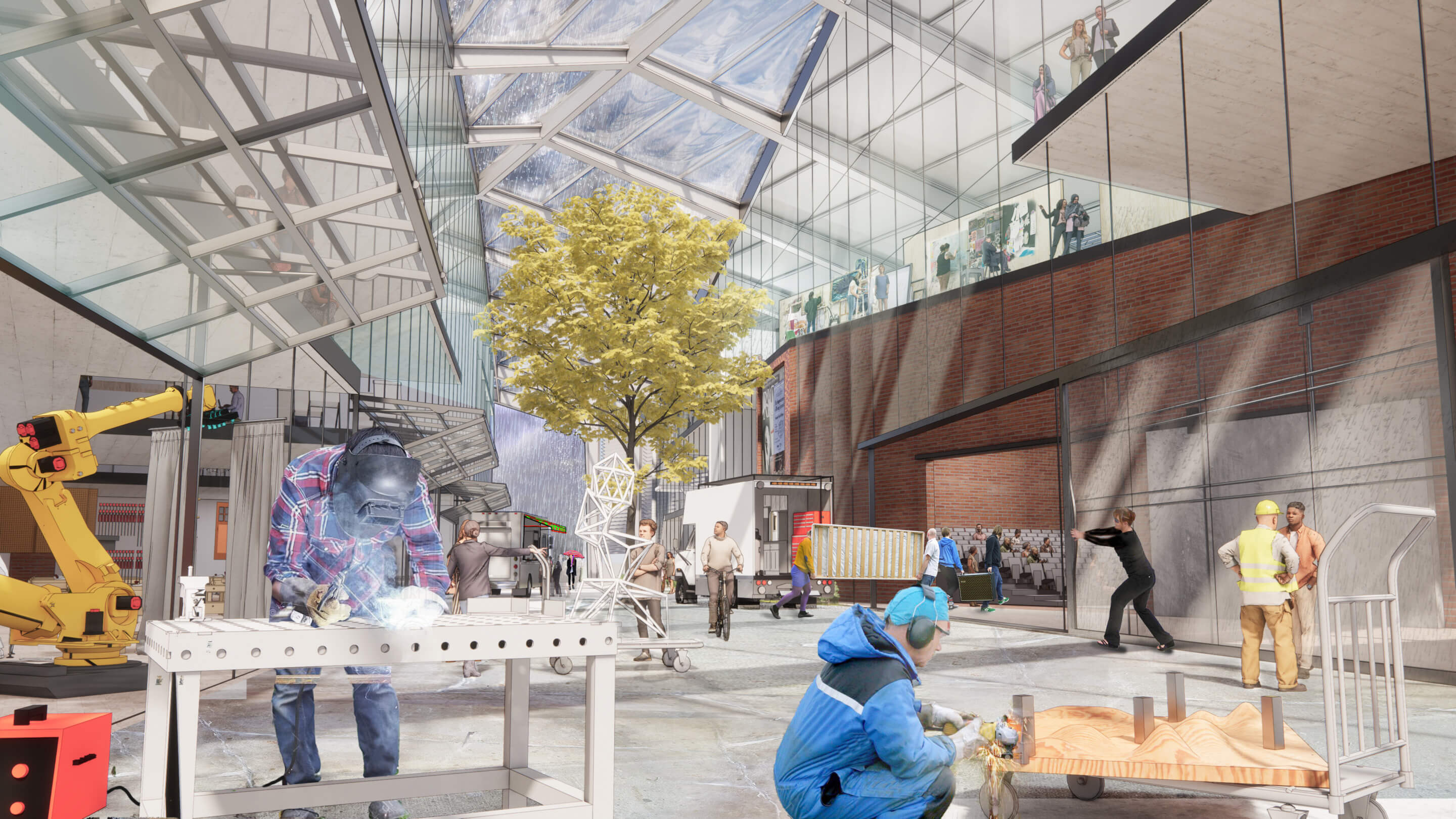
Commissioned by John and Dominique de Menil and completed in 1969 and 1970, respectively, the Art Barn and Media Center were designed by local architects Howard Barnstone and Eugene Aubry in what Rice referred to “as a dramatic advancement of the ubiquitous Butler building, the mass-produced, pre-engineered metal structures that became popular following World War I.”
Erected at a rapid clip and meant only to stand temporarily, the simple wood-framed, corrugated metal-clad structures, which evoke the agricultural outbuildings dotting the rural Texas landscape, together served as the epicenter of artistic goings-on at Rice for over five decades. In 2014, the Art Barn was razed to make way for the Moody Center while Sarofim Hall will rise where the Media Center once stood.
“What’s really unique about the site for this project is the history of the former Art Barn and Media Center buildings—two simple yet iconic metal buildings whose significance cannot be ignored,” said University Architect George Ristow in a statement. “DS+R’s initial concept for the new building cleverly weaves the symbolism of that history with the scale, materiality and porosity of the broader campus fabric. With the building being at the outward-facing perimeter—and at an entrance into campus that has evolved into one of the most active and dynamic access points—it will undoubtedly have a different kind of visibility beyond the hedges that will be leveraged as a new and unique gateway to the Rice arts corridor.”
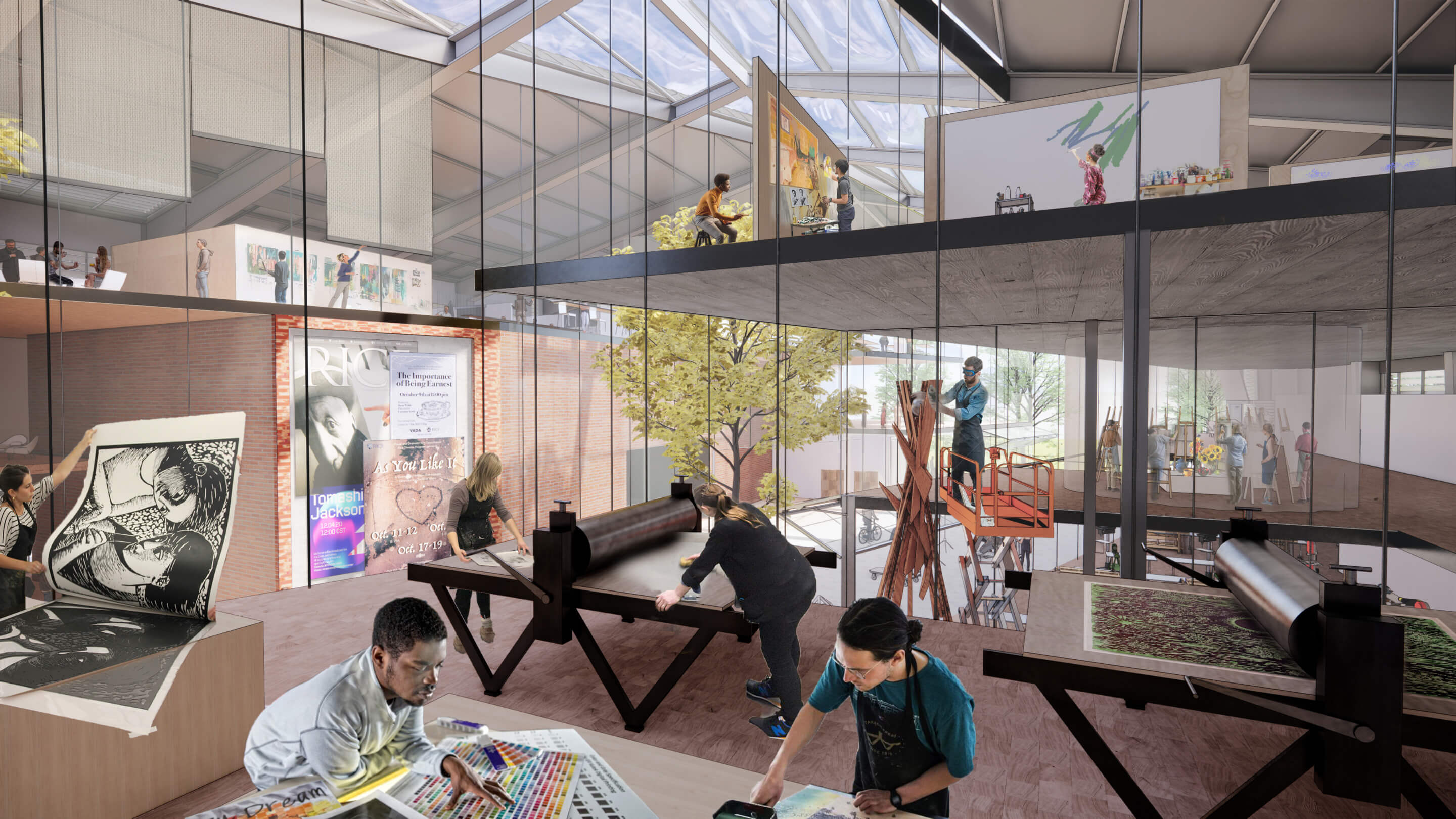
Although details and design renderings of the four-story Sarofim Hall have only just been announced by Rice, DS+R was selected for the $25 million project in 2020 through a national competition. The New York City-based firm is joined by a larger design team that includes, among others, Jackson & Ryan Architects in the role of executive architect, OJB Landscape Architecture, Fisher Dachs Associates as theater consultant, and Threshold overseeing acoustics and AV elements. A groundbreaking is slated for next year with a target completion date of 2024.
Sarofim Hall is technically not the first Rice commission for DS+R. In 2014, the firm was tapped by the university to design a 600-seat opera house at the site of what was once a parking lot. Work on that project was ultimately pushed back and the firm, having ushered the project through the pre-design phase, was replaced by Allan Greenberg Architect for the schematic and design stages. That years-in-the-making, classical-style project, now known as the Brockman Hall for Opera, finally broke ground in 2017 and, as mentioned, will be a neighbor of Sarofim Hall.
As for Renfro, who was born outside of Houston in the city of Baytown and graduated from Rice in 1989, his own experience at the university was a department-spanning one. As reported by the Houston Chronicle, he arrived on campus to study music before shifting his focus to art and architecture. (He received his M.Arch in 1994 from the Columbia University Graduate School of Architecture, Planning and Preservation.)
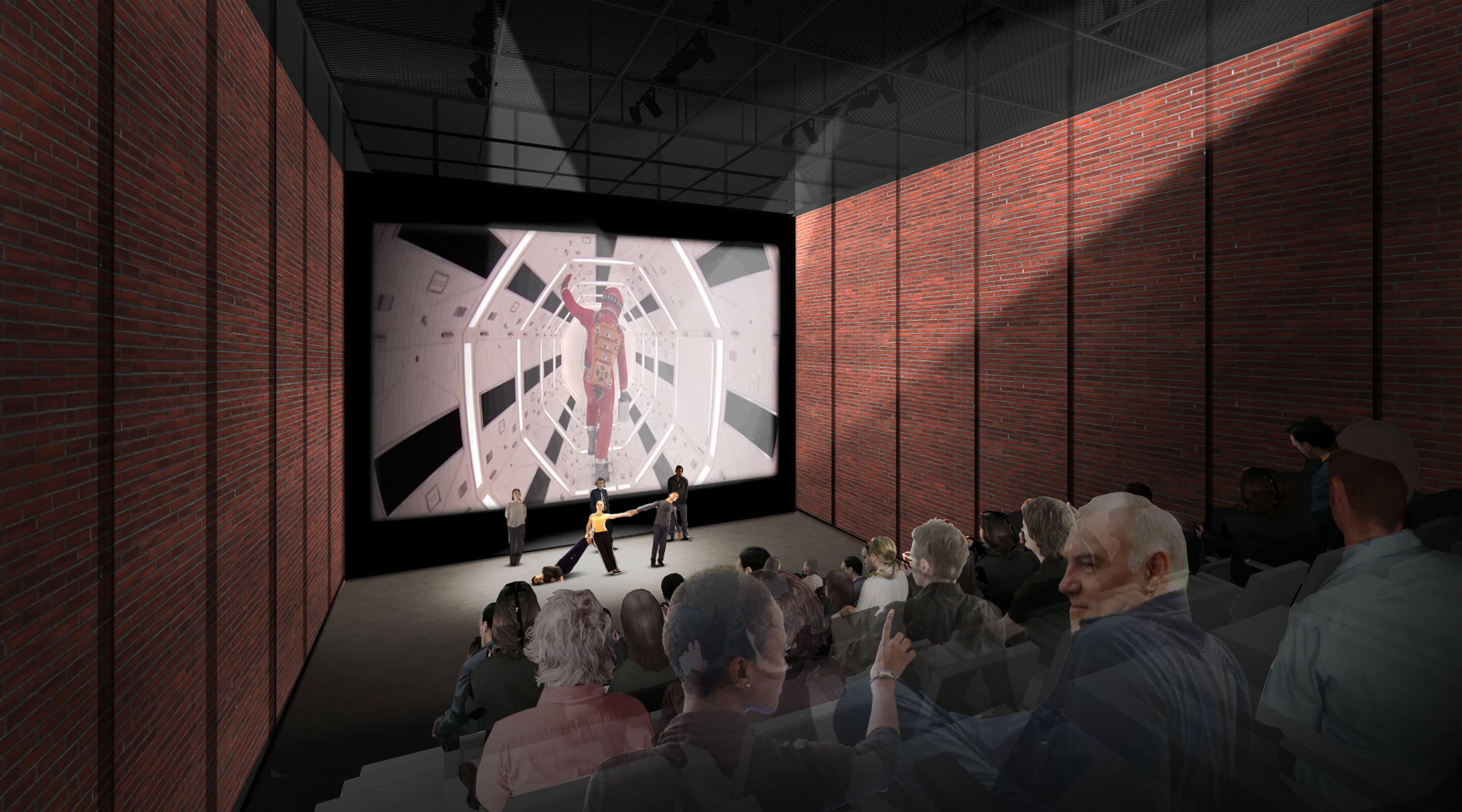
“Cross-disciplinary discourse is a hallmark of the arts in the 21st century, but it has been difficult at Rice since its facilities are scattered all over campus,” Renfro explained in a statement, recollecting the long walks across campus that were required between art classes of different disciplines while he was a Rice student. “Sarofim Hall will not only bring these programs together for the first time, but also facilitate experimentation and collaboration between disciplines through the use of open, transparent, indoor/outdoor and public-facing space.”
“The building shell is thought of as a piece of infrastructure: simple, durable and timeless, while the insides can transform as needs change,” Renfro added.
Major features of Sarofim Hall include the glass-lined ArtStreet, a dynamic pedestrian corridor that bisects the building diagonally and serves as a “bridge between Rice and the City” where “students, faculty, and the public mingle […] creating a new social hub that inherits the DNA of the Rice arcades and courtyards.” Another major public-facing element is the West Porch, a sheltered outdoor extension of the building that will function as a social front porch that can host classes, exhibitions, screenings, and other outdoor programming.
Inside Sarofim Hall, which will provide space for Rice’s Media, Film, Photography, Painting, Print-Making, Drawing, Sculpture, and Performance departments, there are plans for a 230-seat cinema, a suite of flexible presentation halls that incorporate advanced acoustical and technical systems, and a highly adaptable core Performance Space that can be employed for a wide range of performing arts needs while accommodating an audience of 125.
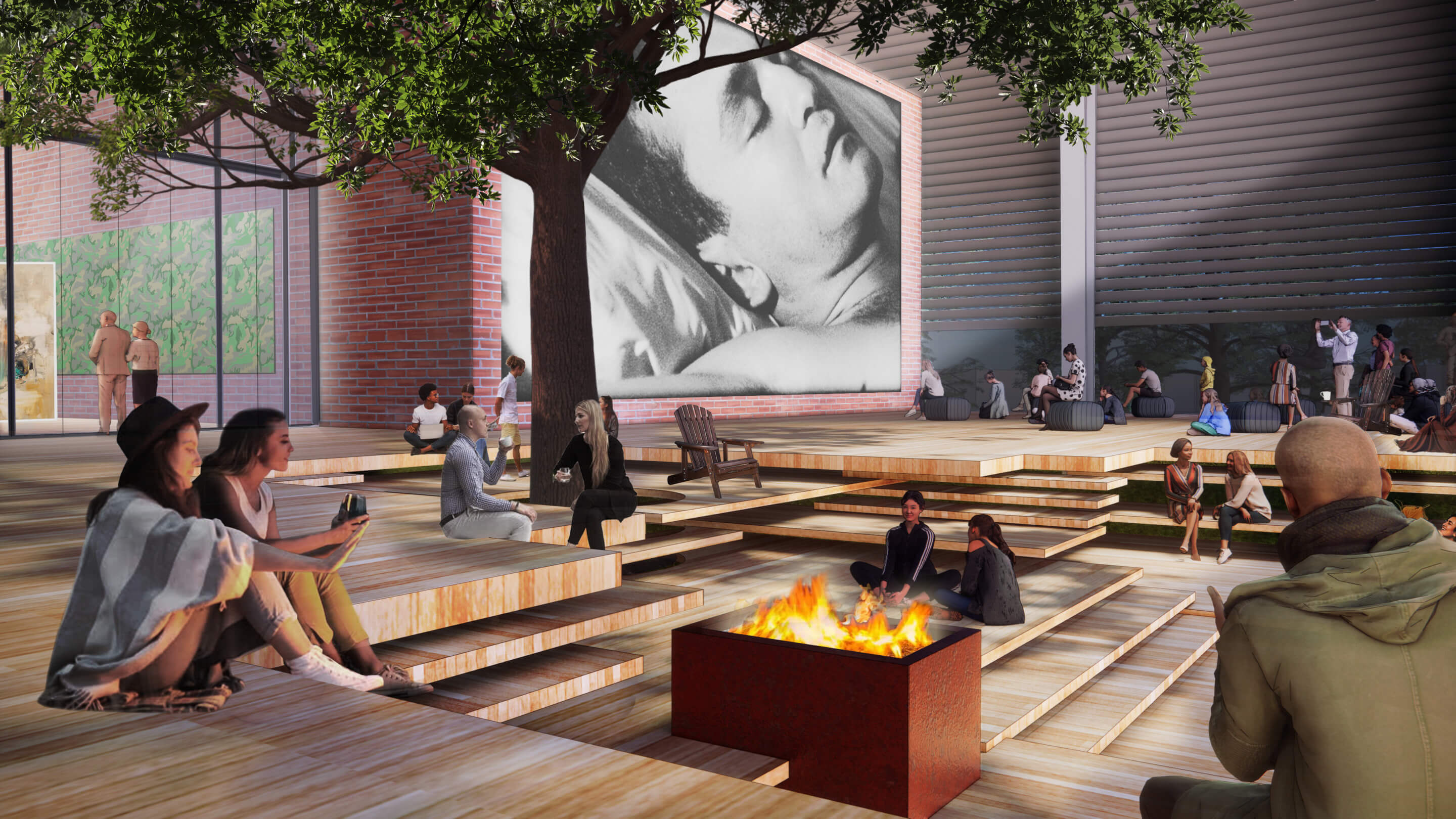
Joining these building-anchoring spaces will be the aforementioned studios, offices, labs, and “dedicated interstitial spaces” that will function as shared work and social zones, per DS+R. “Every space, enclosed or open, indoors or outdoors, serves a purpose in this process: making, thinking, discussing, experimentation and innovation all happen under one roof,” the firm elaborated. “Every wall and niche can become a surface or area for the display of art. The boundaries between disciplines, maker-spaces and exhibition spaces are blurred.”
“With DS+R helming the design of a building that will provide a flexible space for new thinking around the making of contemporary art and performance, Rice will be poised to activate dynamic interdisciplinary as well as interdepartmental collaborations, mindful of the tradition of aesthetics and social justice that the de Menils began locally,” said Bruce Hainley, incoming chair of Rice’s Department of Visual and Dramatic Arts. “Soon the new building will allow a vital humanities department to resituate itself and the arts as central to the university, making for one of the most compelling sites of invitation to the greater community of Houston.”










